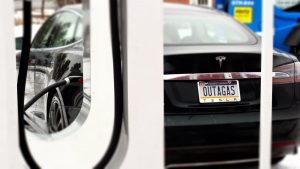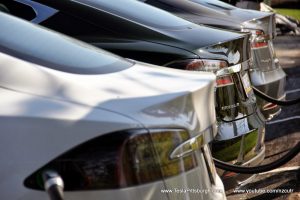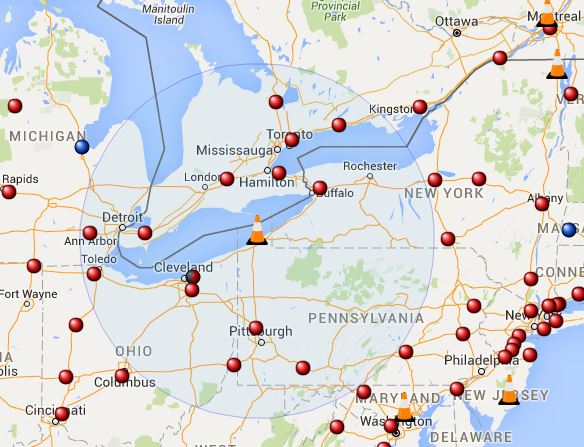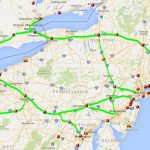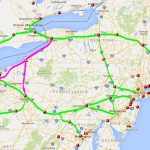News
Tesla opens Erie Supercharger connecting west PA with NY
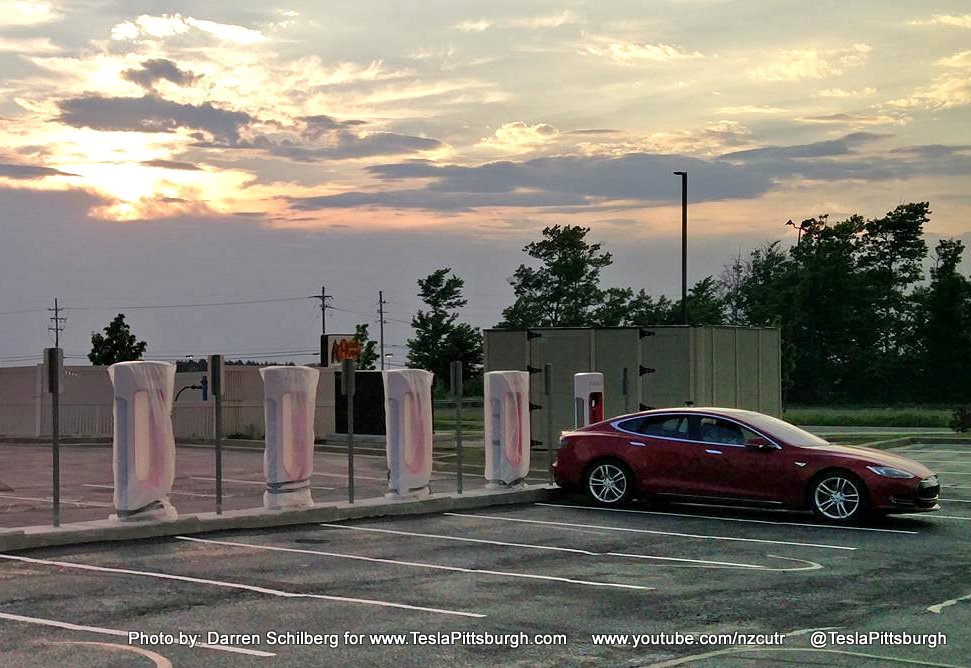
After years of not-so-quiet desperation, the “missing link” Supercharger in Erie, PA has finally powered up! The location is a vital link for Tesla owners going multiple directions and one that has been near the top of regional owners’ requests.
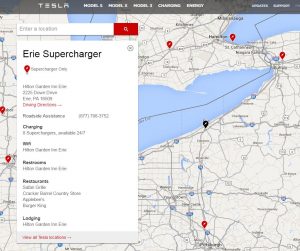 While you might not think of Erie as a transportation hub, it quickly became a desirable charging stop as the Supercharger network has been built out, much like railroad stations and crossroads have historically become vital only after their peripheral arteries grew.
While you might not think of Erie as a transportation hub, it quickly became a desirable charging stop as the Supercharger network has been built out, much like railroad stations and crossroads have historically become vital only after their peripheral arteries grew.
Emails to and from Tesla suggesting locations had always centered around the busy Peach Street commercial district. Indications were strong that Tesla had found a site long ago only to have it fall through for unknown reasons– a story that would seem to mirror the same timetable and complications that long plagued the Harrisburg, PA Supercharger.

The one-two punch of having two strategically located Pennsylvania charging sites fall through must have hit the team hard after the relative ease of building Somerset and Cranberry locations near Pittsburgh. Harrisburg was another long-bemoaned missing link that made travel across the state problematic at best. Eventually, a welcoming property was found and construction in Harrisburg and Erie have been nearly simultaneous, with Harrisburg coming online just a few weeks earlier.
With Erie now powered up, the hosting businesses in Erie are hoping to attract some new guests. My own observations from frequent travels up and down I-79/90 would suggest they’re going to be pleasantly surprised. Ontario license plates make semi-annual appearances in large numbers as the “Snowbirds” transit western Pennsylvania. They’re also common sights around Pittsburgh year-round, with a good majority of them coming from Toronto.
The largest city in Ontario is its provincial capital, Toronto– indeed, it might surprise many to find out that Toronto has long been the largest city in Canada, more than double the size of Vancouver. It also barely nudges Chicago out of the top four on the continent, with only Mexico City, New York City and Los Angeles claiming more residents. So when the city of Toronto goes on vacation… a good many of them wind up in western Pennsylvania.
For Tesla owners in Ontario, the Erie Supercharger is a reasonable half-day’s drive away. Straight drive-time is about 4 hours, but add in border crossings, charging stops and some meals and those driving from Canada will find the proximity of the Erie hotels to be an ideal overnight rest– regardless of which way they’re going. It’s also an ideal overnight from Washington, DC (among others) and a more ambitious day away from Chicago or Boston. The “jump” from Pittsburgh/Cleveland to Buffalo is history!
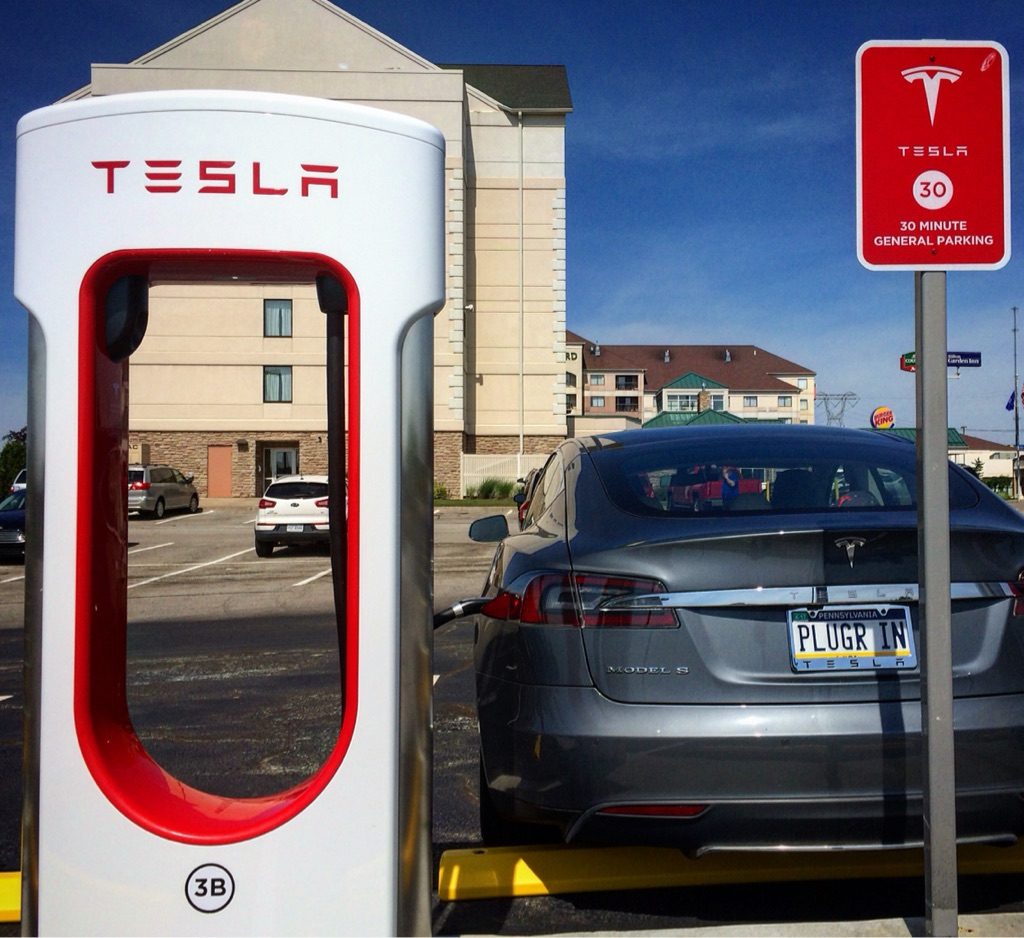
More importantly, the addition of Erie makes these trips less butt-clenching. Hyper-miling the stretch from Ohio or Pittsburgh to Buffalo, New York, was always doable in warm weather with careful planning and discipline. Winter brings brutally cold weather from across Lake Erie and strong headwinds (particularly for south/west bound traffic), often laden with snow and ice. With that comes a dramatically shortened range and the trip becomes very questionable in even an 85/90 kWh Tesla. Several drivers have found themselves limping through bad weather conditions with cabin heat exchanged for heart-pounding images of impending doom. Erie makes these worries all go away and four-season travel around the lake should be no less difficult than in a gas-powered car… and certainly much more pleasurable!
If you have destination charging as an option, the Erie Supercharger also partially plugs a large hole in rural New York and Pennsylvania. With a modest 200 mile (as the crow flies) radius centered on the charger you could hypothetically now reach deep into the less populous parts of both states to enjoy their many parks. Or… admittedly, you could drive into the middle of Lake Erie and have range enough to make it back (assuming you’ve first activated submarine mode).
The Hilton Garden Inn, which hosts the Supercharger, is part of a larger facility called the Ambassador Banquet and Conference Center, which includes a Courtyard by Marriott and the Safari Grille. The entire facility is ideal for any road-weary snow birds making their seasonal migration or wedding parties/business meetings full of Tesla owners.
Within easy walking distance of the Supercharger there a lots of food options. A Cracker Barrel beckons for those needing a longer charge, while an Applebee’s and Burger King split the medium and short charging crowd. If you’re willing to brave the pedestrian lights on Peach Street, you can also easily walk to our usual stops, Quaker Steak and Lube. Widen your search zone a little more and the world is your oyster: Steak n’ Shake, Golden Corral, Krispy Kreme, Texas Roadhouse, Eat n’ Park– they’re all accessible by sidewalk. Or you can drive to many more within a mile radius, like our other frequent stop: Famous Dave’s Bar-B-Que.
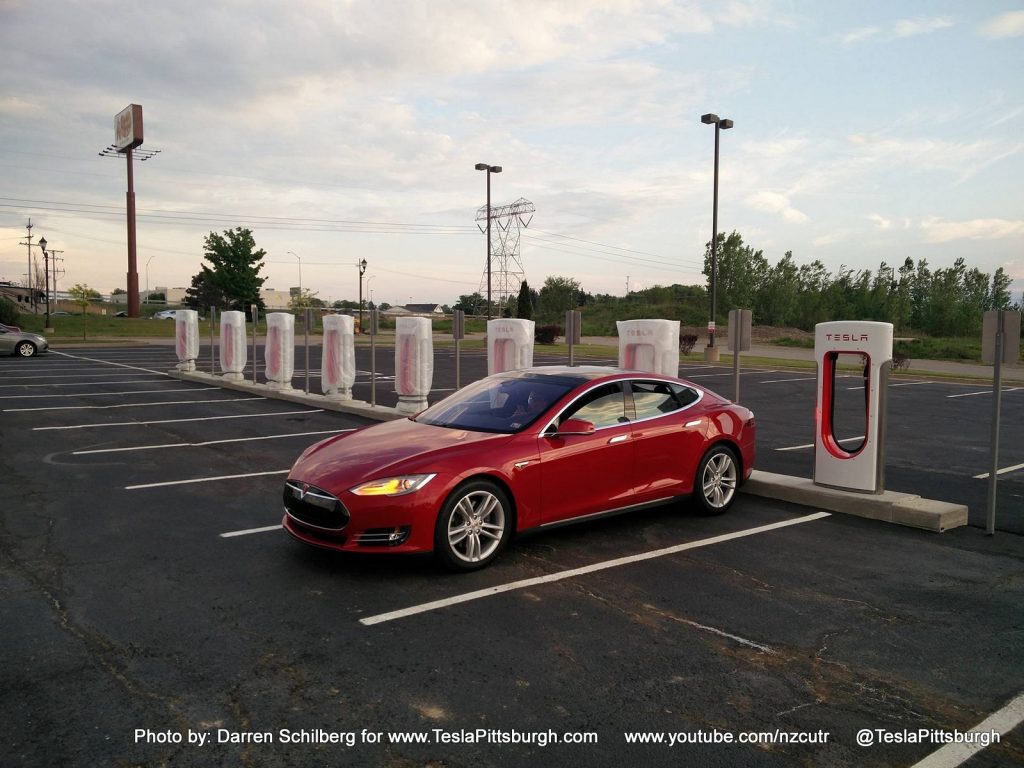
Other nearby shopping opportunities and amusements are nearly endless. All the big box store companies are represented as well as a movie theater and a family-oriented water park called Splash Lagoon, which is owned by the same parent company as the Hilton Garden Inn.
One of the initial unknowns was how Tesla would lay out the chargers themselves. I’d speculated that given the proximity to campgrounds and the lake that Tesla might make the slots pull-through to allow Model X’s with trailers an easier charge.
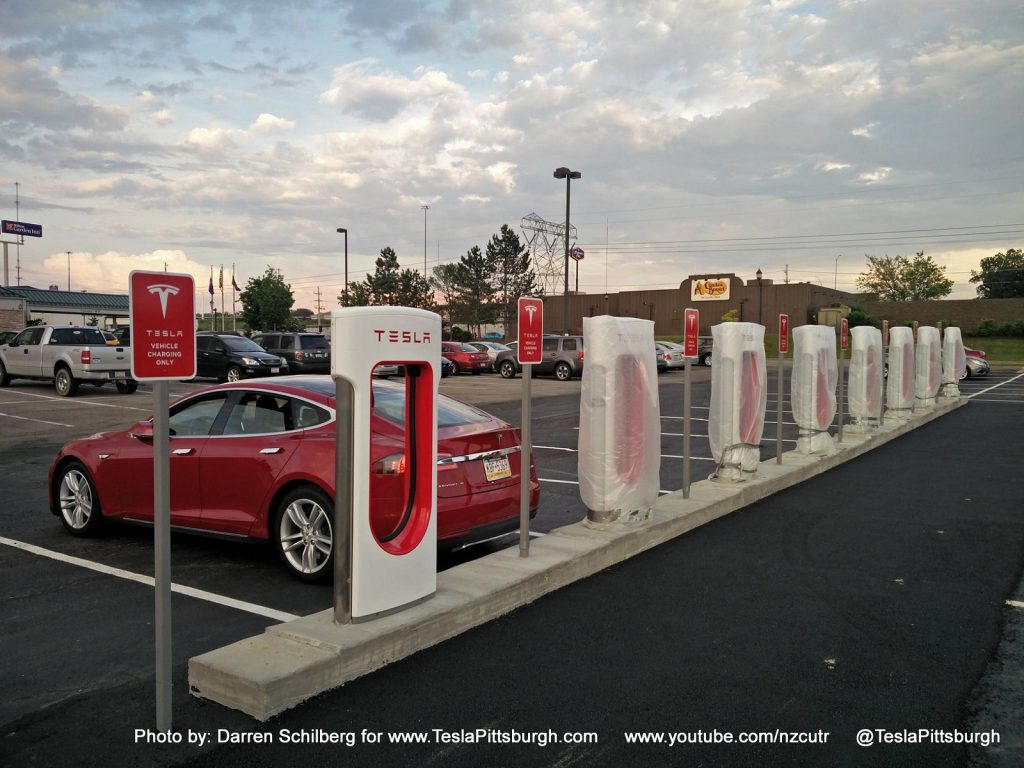
Turns out that was wrong, but there is an advantage to the way Tesla has situated these chargers versus most other locations. They ran a curbed peninsula out into the parking lot between two rows of pre-existing parking spots, which effectively gives access to the chargers from both sides. I’m not a math expert, but to me that at least halves the chances of any given charger being blocked by a gas car.
By powering up the Erie Supercharger, Tesla has essentially completed two major routes that touch all four compass points. With the elimination of cold weather as a range concern, Tesla tourists can now whoosh around the northeast with relative ease… with two regional holes yet to fill (and hopefully next): I-80 in Pennsylvania and I-86 in upstate New York.
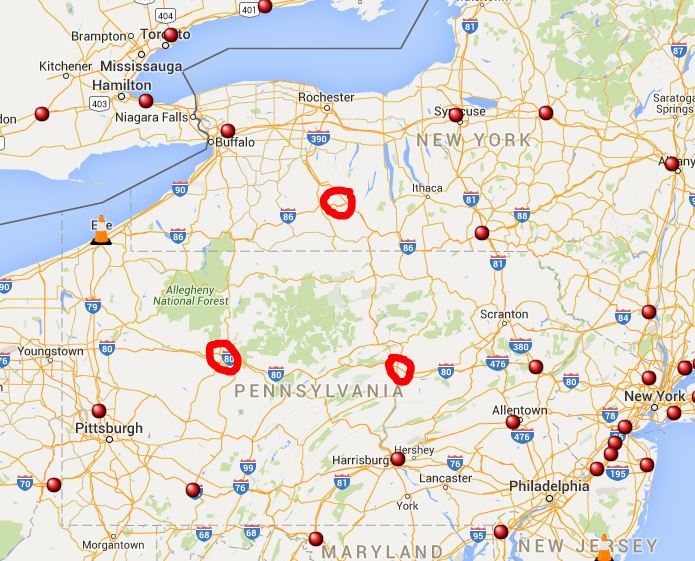
Maps courtesy of Supercharge.info
Please note: We are not specifically authorized, sponsored by, or otherwise directly associated with Tesla Motors and make no claims to be so.

News
Tesla aims to combat common Full Self-Driving problem with new patent
Tesla writes in the patent that its autonomous and semi-autonomous vehicles are heavily reliant on camera systems to navigate and interact with their environment.

Tesla is aiming to combat a common Full Self-Driving problem with a new patent.
One issue with Tesla’s vision-based approach is that sunlight glare can become a troublesome element of everyday travel. Full Self-Driving is certainly an amazing technology, but there are still things Tesla is aiming to figure out with its development.
Unfortunately, it is extremely difficult to get around this issue, and even humans need ways to combat it when they’re driving, as we commonly use sunglasses or sun visors to give us better visibility.
Cameras obviously do not have these ways to fight sunglare, but a new patent Tesla recently had published aims to fight this through a “glare shield.”
Tesla writes in the patent that its autonomous and semi-autonomous vehicles are heavily reliant on camera systems to navigate and interact with their environment.

The ability to see surroundings is crucial for accurate performance, and glare is one element of interference that has yet to be confronted.
Tesla described the patent, which will utilize “a textured surface composed of an array of micro-cones, or cone-shaped formations, which serve to scatter incident light in various directions, thereby reducing glare and improving camera vision.”

The patent was first spotted by Not a Tesla App.
The design of the micro-cones is the first element of the puzzle to fight the excess glare. The patent says they are “optimized in size, angle, and orientation to minimize Total Hemispherical Reflectance (THR) and reflection penalty, enhancing the camera’s ability to accurately interpret visual data.”
Additionally, there is an electromechanical system for dynamic orientation adjustment, which will allow the micro-cones to move based on the angle of external light sources.
This is not the only thing Tesla is mulling to resolve issues with sunlight glare, as it has also worked on two other ways to combat the problem. One thing the company has discussed is a direct photon count.
CEO Elon Musk said during the Q2 Earnings Call:
“We use an approach which is direct photon count. When you see a processed image, so the image that goes from the sort of photon counter — the silicon photon counter — that then goes through a digital signal processor or image signal processor, that’s normally what happens. And then the image that you see looks all washed out, because if you point the camera at the sun, the post-processing of the photon counting washes things out.”
Future Hardware iterations, like Hardware 5 and Hardware 6, could also integrate better solutions for the sunglare issue, such as neutral density filters or heated lenses, aiming to solve glare more effectively.
Elon Musk
Delaware Supreme Court reinstates Elon Musk’s 2018 Tesla CEO pay package
The unanimous decision criticized the prior total rescission as “improper and inequitable,” arguing that it left Musk uncompensated for six years of transformative leadership at Tesla.

The Delaware Supreme Court has overturned a lower court ruling, reinstating Elon Musk’s 2018 compensation package originally valued at $56 billion but now worth approximately $139 billion due to Tesla’s soaring stock price.
The unanimous decision criticized the prior total rescission as “improper and inequitable,” arguing that it left Musk uncompensated for six years of transformative leadership at Tesla. Musk quickly celebrated the outcome on X, stating that he felt “vindicated.” He also shared his gratitude to TSLA shareholders.
Delaware Supreme Court makes a decision
In a 49-page ruling Friday, the Delaware Supreme Court reversed Chancellor Kathaleen McCormick’s 2024 decision that voided the 2018 package over alleged board conflicts and inadequate shareholder disclosures. The high court acknowledged varying views on liability but agreed rescission was excessive, stating it “leaves Musk uncompensated for his time and efforts over a period of six years.”
The 2018 plan granted Musk options on about 304 million shares upon hitting aggressive milestones, all of which were achieved ahead of time. Shareholders overwhelmingly approved it initially in 2018 and ratified it once again in 2024 after the Delaware lower court struck it down. The case against Musk’s 2018 pay package was filed by plaintiff Richard Tornetta, who held just nine shares when the compensation plan was approved.
A hard-fought victory
As noted in a Reuters report, Tesla’s win avoids a potential $26 billion earnings hit from replacing the award at current prices. Tesla, now Texas-incorporated, had hedged with interim plans, including a November 2025 shareholder-approved package potentially worth $878 billion tied to Robotaxi and Optimus goals and other extremely aggressive operational milestones.
The saga surrounding Elon Musk’s 2018 pay package ultimately damaged Delaware’s corporate appeal, prompting a number of high-profile firms, such as Dropbox, Roblox, Trade Desk, and Coinbase, to follow Tesla’s exodus out of the state. What added more fuel to the issue was the fact that Tornetta’s legal team, following the lower court’s 2024 decision, demanded a fee request of more than $5.1 billion worth of TSLA stock, which was equal to an hourly rate of over $200,000.
Delaware Supreme Court Elon Musk 2018 Pay Package by Simon Alvarez
News
Tesla Cybercab tests are going on overdrive with production-ready units
Tesla is ramping its real-world tests of the Cybercab, with multiple sightings of the vehicle being reported across social media this week.

Tesla is ramping its real-world tests of the Cybercab, with multiple sightings of the autonomous two-seater being reported across social media this week. Based on videos of the vehicle that have been shared online, it appears that Cybercab tests are underway across multiple states.
Recent Cybercab sightings
Reports of Cybercab tests have ramped this week, with a vehicle that looked like a production-ready prototype being spotted at Apple’s Visitor Center in California. The vehicle in this sighting was interesting as it was equipped with a steering wheel. The vehicle also featured some changes to the design of its brake lights.
The Cybercab was also filmed testing at the Fremont factory’s test track, which also seemed to involve a vehicle that looked production-ready. This also seemed to be the case for a Cybercab that was spotted in Austin, Texas, which happened to be undergoing real-world tests. Overall, these sightings suggest that Cybercab testing is fully underway, and the vehicle is really moving towards production.
Production design all but finalized?
Recently, a near-production-ready Cybercab was showcased at Tesla’s Santana Row showroom in San Jose. The vehicle was equipped with frameless windows, dual windshield wipers, powered butterfly door struts, an extended front splitter, an updated lightbar, new wheel covers, and a license plate bracket. Interior updates include redesigned dash/door panels, refined seats with center cupholders, updated carpet, and what appeared to be improved legroom.
There seems to be a pretty good chance that the Cybercab’s design has been all but finalized, at least considering Elon Musk’s comments at the 2025 Annual Shareholder Meeting. During the event, Musk confirmed that the vehicle will enter production around April 2026, and its production targets will be quite ambitious.
